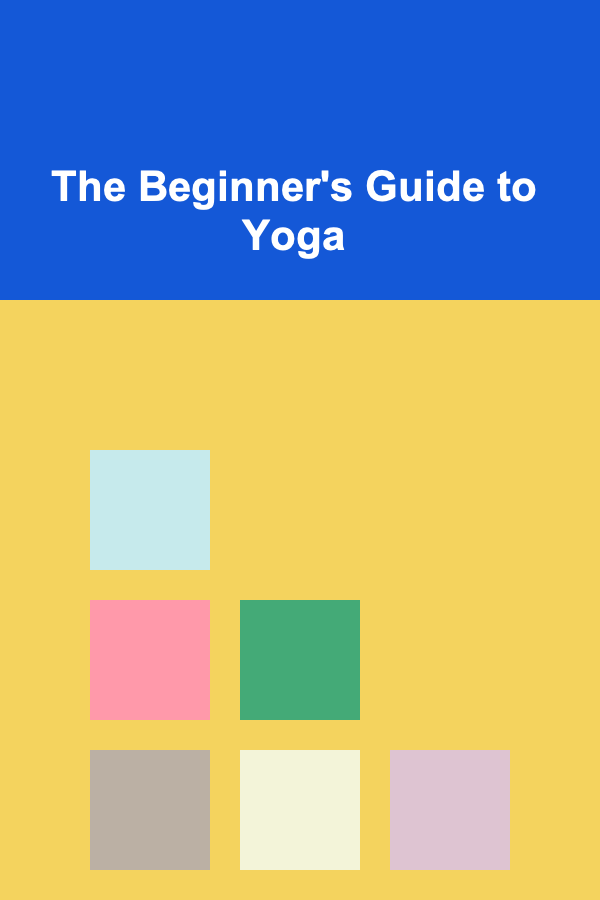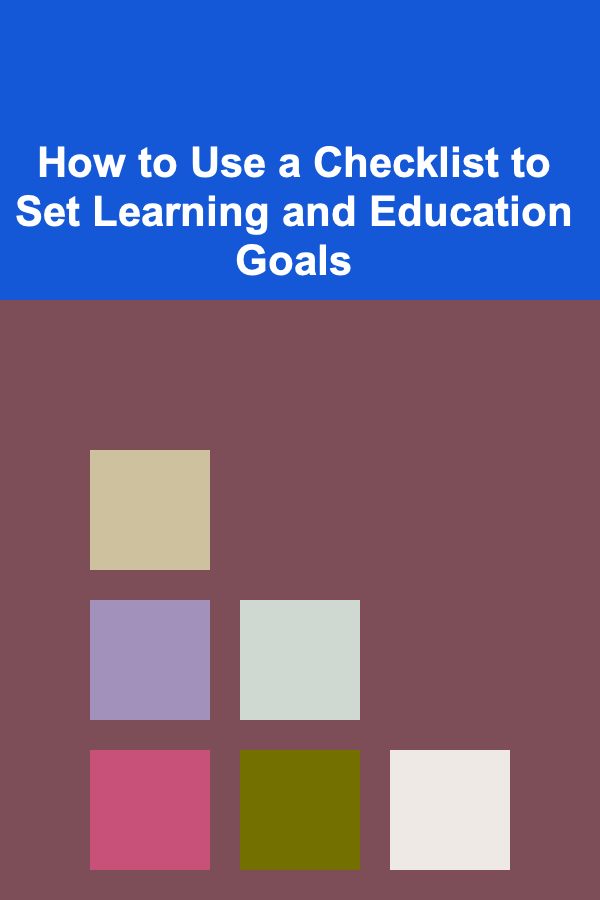
The Beginner's Guide to Yoga
ebook include PDF & Audio bundle (Micro Guide)
$12.99$9.99
Limited Time Offer! Order within the next:

Yoga is an ancient practice that has gained immense popularity worldwide for its physical, mental, and spiritual benefits. Whether you're looking to improve flexibility, reduce stress, or enhance overall well-being, yoga offers a holistic approach to health. However, as a beginner, it can be overwhelming to know where to start. This guide will provide you with actionable steps to help you begin your yoga journey in a structured, manageable, and enjoyable way.
Understanding Yoga
Yoga is a combination of physical postures (asanas), breathing exercises (pranayama), and meditation techniques designed to connect the body, mind, and spirit. Originating in ancient India, yoga was initially developed as a spiritual discipline but has since evolved into a practice that is widely embraced for its physical and mental benefits.
There are many different styles and approaches to yoga, ranging from physically demanding styles like Vinyasa and Ashtanga to gentler practices like Hatha and Yin yoga. For beginners, it's essential to choose a style that aligns with your goals and level of fitness.
The Benefits of Yoga
Yoga offers a variety of benefits for both the body and mind:
- Improved Flexibility: Regular practice increases flexibility in muscles and joints, which can help alleviate stiffness and discomfort.
- Increased Strength: Many yoga poses require you to support your body weight in different ways, improving muscle strength, particularly in the core, arms, and legs.
- Stress Relief: Yoga promotes relaxation through controlled breathing and mindfulness, helping to reduce stress and anxiety.
- Better Posture: Yoga strengthens the muscles that support good posture, reducing strain on the spine and improving overall alignment.
- Mental Clarity: Meditation and breathwork in yoga encourage mindfulness, helping to clear the mind and promote mental well-being.
Getting Started: Essential Gear
One of the most attractive aspects of yoga is that it doesn't require a lot of specialized equipment. However, having a few essential items can make your practice more comfortable and enjoyable.
2.1 Yoga Mat
A good quality yoga mat is essential for providing grip, cushioning, and stability during your practice. There are various types of mats available, but for beginners, look for a mat that offers adequate cushioning without being too thick (about 3--5 mm is ideal). A non-slip surface is also important, especially if you're practicing at home or in a space without professional equipment.
2.2 Comfortable Clothing
Wear loose, breathable clothing that allows you to move freely. Tight-fitting clothes that don't restrict movement are also suitable, as long as they're comfortable and allow your body to bend and stretch easily. Avoid overly baggy clothes, as they can get in the way of your movements.
2.3 Props (Optional)
While not necessary for a beginner, props can help you deepen your practice as you progress. Some common props include:
- Blocks: These can assist in achieving proper alignment and providing support for challenging poses.
- Straps: Useful for improving flexibility, especially in poses where you need to reach for your feet or extend your arms.
- Blankets: Used for extra cushioning or support in restorative poses or for comfort during seated meditation.
Learn the Basic Poses
The foundation of yoga consists of various poses that build strength, flexibility, and balance. As a beginner, it's important to familiarize yourself with the basic poses, which are often included in most yoga styles. Here's a breakdown of essential poses to begin with:
3.1 Mountain Pose (Tadasana)
Mountain pose is a standing posture that promotes stability and good posture.
- How to do it: Stand with your feet hip-width apart, arms by your sides. Engage your thighs and lift through the crown of your head. Ensure your weight is evenly distributed between your feet, and hold for several breaths.
3.2 Downward Dog (Adho Mukha Svanasana)
A signature yoga pose that stretches and strengthens the body.
- How to do it: Start on your hands and knees, lift your hips up and back, forming an inverted V shape. Press your hands into the mat and keep your feet hip-width apart. Relax your neck and keep your head between your arms.
3.3 Child's Pose (Balasana)
This resting pose helps to stretch the back and promote relaxation.
- How to do it: Kneel on the floor, sitting back onto your heels. Lower your torso down toward your thighs and stretch your arms forward on the mat. Rest your forehead on the floor and breathe deeply.
3.4 Warrior I (Virabhadrasana I)
Warrior I strengthens the legs, improves balance, and stretches the chest and hips.
- How to do it: Start in a standing position, step one foot back, and bend your front knee to form a 90-degree angle. Raise your arms overhead, keeping your back leg straight and your hips squared forward.
3.5 Cat-Cow Pose (Marjaryasana-Bitilasana)
This sequence of poses helps to warm up the spine and improve flexibility.
- How to do it: Start on your hands and knees, with your wrists directly under your shoulders and knees under your hips. Inhale as you drop your belly toward the mat, lifting your head and tailbone (Cow Pose). Exhale as you round your spine, tucking your chin toward your chest (Cat Pose). Continue this flow for several breaths.
Understand the Importance of Breath
In yoga, the breath is just as important as the movement. Breathing deeply and intentionally helps to calm the mind, increase circulation, and support the body in holding poses longer. Most yoga styles incorporate a type of breathwork called pranayama, which involves controlling the breath to achieve specific physical or mental benefits.
4.1 Ujjayi Breath
Ujjayi breath, also known as "victorious breath," is a common breathing technique used in many yoga styles.
- How to do it: Inhale deeply through your nose, then exhale slowly through your nose while constricting your throat slightly, creating a soft hissing sound. Focus on maintaining a steady, controlled breath throughout your practice.
4.2 Diaphragmatic Breathing
Diaphragmatic breathing, or belly breathing, is another fundamental technique in yoga that promotes relaxation and deepens the practice.
- How to do it: As you inhale, expand your diaphragm and fill your lungs with air, allowing your belly to rise. Exhale slowly and completely, allowing your belly to fall. Focus on deep, mindful breaths to calm the nervous system.
Start with Short Sessions
As a beginner, it's essential not to overdo it. Yoga is about progress, not perfection, and pushing yourself too hard can lead to frustration or injury. Start with short sessions and gradually increase the duration as you become more comfortable with the practice.
5.1 Create a Routine
A consistent practice is key to improving and reaping the benefits of yoga. Begin with a 15--30 minute session, focusing on the basic poses and breathing exercises. As you become more confident, you can extend your sessions or try more challenging poses.
5.2 Be Patient
Yoga is a journey, not a race. Don't expect instant results. It takes time to build strength, flexibility, and mental clarity. Be patient with yourself, and celebrate small victories along the way.
Incorporate Meditation and Mindfulness
While yoga primarily focuses on the physical body, it also has a strong connection to mental and emotional health. Incorporating meditation and mindfulness into your practice can enhance your overall well-being.
6.1 Simple Meditation Practice
You can incorporate meditation at the beginning or end of your yoga practice. Start with a few minutes of seated meditation, focusing on your breath. Gradually work up to longer sessions as you become more comfortable.
6.2 Mindful Movement
Yoga encourages mindfulness---paying attention to the present moment. As you move through poses, focus on how your body feels, the sensations in your muscles, and the rhythm of your breath. This mindfulness can help reduce stress and increase self-awareness.
Join a Class or Online Yoga Community
Although yoga can be practiced at home, taking a class or joining an online community can provide guidance and motivation. Many yoga instructors offer beginner-friendly classes, either in-person or online. This can help you understand proper alignment and ensure that you're practicing safely.
7.1 Attend Local Classes
Check out local yoga studios or community centers to find classes for beginners. A live class offers the advantage of hands-on adjustments and personalized feedback.
7.2 Explore Online Platforms
There are numerous online platforms that offer yoga classes for beginners. Websites like Yoga with Adriene on YouTube and apps like Daily Yoga provide a variety of free or paid classes that you can do at home.
Conclusion
Yoga is a practice that can bring profound benefits to your body and mind. As a beginner, it's important to approach yoga with patience and an open mind. Start with basic poses, focus on your breath, and gradually incorporate meditation and mindfulness into your routine. With consistency and dedication, yoga will become an enriching part of your daily life, enhancing your flexibility, strength, and mental clarity. Enjoy the journey, and remember that yoga is about progress, not perfection.

How to Create a Checklist for Conducting Market Research Before Launch
Read More
How to Make Money with Deep Learning Without a Large Investment
Read More
How to Start a Family Exercise Routine at Home
Read More
How to Turn Your Expertise into a Consulting Business
Read More
How to Use a Checklist to Set Learning and Education Goals
Read More
How to Use Multi-Purpose Furniture for Hidden Storage
Read MoreOther Products

How to Create a Checklist for Conducting Market Research Before Launch
Read More
How to Make Money with Deep Learning Without a Large Investment
Read More
How to Start a Family Exercise Routine at Home
Read More
How to Turn Your Expertise into a Consulting Business
Read More
How to Use a Checklist to Set Learning and Education Goals
Read More